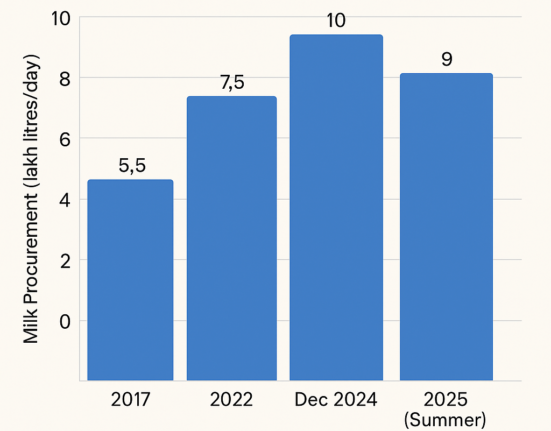AMR Rising in India’s Animal Sector
Antimicrobial resistance (AMR) is becoming a major concern in India’s livestock industry. Microbes are changing fast due to the overuse of antibiotics. This makes common medicines less effective. India depends heavily on livestock for food and rural income. The sector contributes about 4.5% to the national GDP. But frequent antibiotic use in animals has increased resistance risks.
High Antibiotic Use in Food Animals
Many farms still use antibiotics for growth promotion and infection control. Poor hygiene, overcrowding, and weak veterinary support encourage this practice. Global antimicrobial use in food animals may reach 2,00,235 tonnes by 2030. Asia will see the biggest rise. India is already the fourth-largest user of veterinary antibiotics. The most used groups are tetracyclines, penicillins, and macrolides.
Government Steps Up Action
India has taken strong measures to control AMR. Under the National Action Plan, the government banned colistin, nitrofurans, and other important antibiotics in animal feed. FSSAI has stopped the use of several high-risk drugs across dairy, poultry, and aquaculture. The Department of Animal Husbandry is training vets and para-vets to promote responsible use.
Major Ban Announced in 2025
In July 2025, India banned 37 antimicrobial drugs in livestock. This includes 18 antibiotics and 18 antivirals. The ban covers cattle, poultry, fish, and honeybees. It is one of India’s strongest policy moves against AMR. The country is also expanding surveillance under the One Health approach.
Challenges Remain on the Ground
Enforcing the rules is still difficult. Many small farms work without proper guidance. Farmers often focus on higher production rather than safe practices. Awareness about AMR is low. Data on actual resistance levels is limited.
A Turning Point for Livestock Health
India’s new policies show a strong commitment. If enforced well, they can reduce antibiotic misuse and protect public health. Awareness and education will play a key role. A unified One Health approach is essential to manage AMR in the long term.







